Fostering a thriving middle class
Fostering a Thriving Middle Class in the Creator Economy
In 1788, George Washington foresaw America as an ideal haven for hardworking individuals of all social backgrounds due to fair property distribution, ample unoccupied lands, and accessible means of sustenance. This vision highlighted the inherent opportunity within the nation.
In 2016, Alex Zhu, co-CEO of Musical.ly and later VP at Bytedance, likened starting a new social network to establishing a new country. He emphasized the necessity of offering users the promise of success, akin to the allure of the American Dream. The new platform aimed to create upward mobility for all, fostering a growing middle class.
Today, many online platforms echo the ethos of the American Dream. Studies show a significant portion of young children aspire to be content creators like YouTubers, inspired by success stories of ordinary individuals achieving extraordinary fame and wealth. YouTube creator David Dobrik earned $275,000 from AdSense last year for an average of 60 million views. Over $7 million is earned by the top 10 Substack creators. 16-year-old Charli D’Amelio is estimated to be worth $4 million as the first TikTok creator to surpass 100 million followers. TikTok is just 1.5 years old.
However, while some achieve remarkable stardom and wealth, the reality for most creators mirrors an economy where prosperity is heavily concentrated among a few. Only a small percentage of creators on platforms like Patreon or Spotify earn wages comparable to full-time middle-income households in America.
The landscape of online content creation reflects immense potential but also reveals
disparities in income distribution, contrasting the American Dream’s promise of widespread opportunity and success.
The Missing Creator Middle Class

The sustainability of nations and the defensibility of platforms is better when wealth isn’t concentrated in the top 1%. In the real world, a healthy middle class is critical for promoting societal trust, providing a stable source of demand for products and services, and driving innovation. By lessening wealth concentration on platforms, a would-be competitor is less likely to poach top creators and threaten the entire company.
It has been endlessly reinforced, contradicted, and debated since Wired magazine editor Chris Anderson first published his “Long Tail” theory in 2004. Using the internet as a platform for niche products and creators to flourish would remove physical limitations (local audiences, limited shelf space).
According to Google, 15% of all queries are searched for the first time every day, a figure that has remained stable since 2013.
The shift to digital content hasn’t been correlated with a burgeoning long tail: top creators are hugely successful, while long-tail creators barely make ends meet. Spotify, for example, makes an average of $22,395 per artist per quarter from its top 43,000 artists. The rest of its 3 million creators, or 98.6% of its artists, made just $36 per artist per quarter.
Video game creators are increasingly concentrating their success in fewer hands. An essay by Electronic Arts product lead Ran Mo points out that on the online gaming platform Roblox, the concentration at the top has increased even as total usage has grown: In 2018, the top game on Roblox accounted for 8 to 10% of concurrent users, while in 2020, the top game accounts for upwards of 20 to 25% of concurrent users. He proposes two reasons for this concentration: the lack of an upper limit for engagement in games, and the social nature of games leading to winner-take-all network effects.
In 1981, economist Sherwin Rosen predicted technology would magnify the “superstar phenomenon,” favoring top talents in diverse markets like content creation. He highlighted how technology’s reach amplifies success for the best, unbound by physical limits.
Is inequality inevitable among creators? Perhaps partially. Yet, there exist middle-class creators with loyal audiences, forming a foundation for decent earnings.
Platforms thrive when they offer equal chances for growth and success. The decline of Vine, despite its innovation and large user base, illustrates how creators shifted to platforms offering better earning potential and creative tools.
While stars like Charli and Addison will always emerge, platforms must democratize opportunities for upward mobility. How? By fostering paths for all creators to thrive.
10 Strategies to Grow the Middle Class of Creators

The 20th century saw the deliberate creation of America’s middle class through policies like Roosevelt’s New Deal, the Fair Labor Standards Act, union support, the GI Bill, and the Federal Housing Administration, which empowered workers, distributed wealth opportunities, and curbed income inequality. This led to a robust middle class encompassing 61% of American adults by the late 1960s. However, policy shifts led to a decline, with only 51% in 2019.
Similarly, platforms wield the power to shape their economies. While some inequality is natural in the passion economy due to diverse and irreplaceable content, the trust between creators and their audiences should be valued. Platforms, both established and new, can enhance the creator middle class and expand paths to success. What specific design choices could platforms adopt to make success accessible to more creators?
1. Emphasize Content Variety
Diversifying content types with lower replay value helps mitigate the concentration of popularity among a few mega-hits. By encouraging creators to explore various formats such as educational content, documentaries, or niche topics, platforms can offer a broader range of experiences, attracting different audience segments and providing opportunities for a multitude of creators to thrive.
2. Empower Niche Creators
Recognizing the diversity in quality standards across content categories is crucial. Platforms should foster an environment where varied user preferences and niche interests are celebrated. By highlighting and promoting lesser-known creators who cater to specific audiences or create content in unique styles or genres, platforms can create space for a more diverse range of creators to succeed.
3. Algorithmic Recommendations with Diversity
Recommendation algorithms play a pivotal role in shaping user experiences. Platforms can enhance these algorithms to inject diversity into users’ feeds, ensuring exposure to content beyond their typical interests. This introduces audiences to new creators and content categories, offering opportunities for lesser-known creators to gain visibility and recognition.
4. Foster Collaboration
Collaboration among creators drives growth by facilitating cross-promotion and mutual support. Platforms can provide features that encourage collaborations, such as dedicated spaces for creators to connect, tools for joint content creation, and support networks to foster a sense of community among creators.
5. Invest in Upcoming Creators
Platforms can support emerging talents by providing funding, resources, or educational programs. Initiatives like Patreon Capital or creator-focused funds lower barriers to entry, enabling creators to invest in their content creation endeavors and fuel their growth.
6. Decouple Payouts from Audience Demographics
Rewarding creators based on engagement rather than audience demographics promotes fairness. This approach allows diverse creators, regardless of their audience’s demographics, to earn based on their content’s quality and engagement, ensuring a more level playing field.
7. Capitalizing on Superfans
Direct fan payments through subscriptions, donations, and high-value product sales empower creators to monetize their dedicated fan base more effectively. Platforms can offer tools and features that facilitate direct fan support, enabling creators with smaller but dedicated audiences to earn substantial income.
8. Passive Income Opportunities
Enabling creators to sell digital goods with minimal ongoing effort, like e-books, digital courses, or exclusive content, creates passive income streams. Platforms can support creators in setting up these revenue streams, allowing them to earn continuously from their existing content.
9. Universal Creative Income (UCI)
Introducing a form of UCI could incentivize more individuals to pursue content creation by providing a basic income. This approach could mitigate financial barriers and uncertainties, encouraging a more diverse range of creators to enter and sustain themselves in the creator economy.
10. Education and Training
Platforms can offer comprehensive educational resources, mentorship programs, and communities that facilitate learning and skill development for creators. These programs can cover various aspects, from content creation techniques to business strategies, empowering creators to enhance their craft and navigate the complexities of the digital landscape effectively.
Forces Pushing Towards Inequality
In both the real world and the creator world, inequality is driven by the leverage held by the upper-income segment. Rapid technological progress has led to a wage premium for skilled workers, while low-skill workers struggle to find jobs due to offshoring and automation. The same dynamic exists among creators, where top creators with leverage can keep a larger portion of their earnings.
A Path to Stronger Societies and Platforms

The passion economy celebrates creator leverage but also faces the challenges of inequality. Societies and platforms thrive when there is a path for everyone to have upward mobility and achieve financial security. Balancing the leverage of top creators while lifting up newcomers is key to building a thriving middle class in the creator economy.




